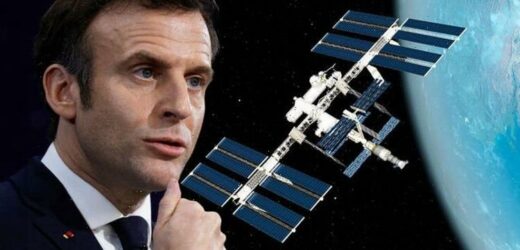SpaceX release concept animation for Mars mission
We use your sign-up to provide content in ways you’ve consented to and to improve our understanding of you. This may include adverts from us and 3rd parties based on our understanding. You can unsubscribe at any time. More info
This comes a month after the Biden administration confirmed that it would extend the station’s operational lifespan to 2030. Now NASA has published an updated vision for the space station as it focuses on a new generation of probes. They expect to send the space lab plunging through Earth’s atmosphere in January 2030, splashing into the Pacific Ocean.
Private companies are now racing to develop a new space station that will launch by the end of the decade to replace the old ISS.
In the US, Nanoracks, Voyager Space and Lockheed Martin are working together to develop a free-flying commercial space station known as Starlab.
Meanwhile, in the UK, Space Entertainment Enterprise (SEE) is collaborating with Axiom Space to build their own commercial station, with more ambitious plans expected to be announced in the future.
Speaking to City A.M, SEE co-founder Dmitry Lesnevsky said: “The race to open up low earth orbit is providing a huge number of opportunities for companies like ours to develop exciting new projects which take advantage of such a different realm.


“The winners will be those businesses who are at the forefront of exploiting the latest technology to achieve in reality what would have been science fiction a couple of decades ago.”
Speaking at the European Space Agency’s (ESA) Space Summit today, Benoît Deper, the CEO of the Space Exploration Company also spoke of plans to have astronauts based on the surface of the Moon by 2030.
She said: “Space travel is changing because some companies and soon in Europe too, have been able to build reusable space crafts.
“Within two to three years we will be able to refuel them.

“Within the end of the decade, we will be able to refuel these spacecraft with resources coming from space.
She noted that companies are on the way to mastering the storage of energy and building habitats on the lunar surface.
She said: “By the end of the decade, there will be four to seven space stations orbiting the Earth.
“By then humanity will have launched 150 missions to the Moon.
“By the end of the decade, there will be about 15 astronauts living on the Moon or on the lunar surface.”
DON’T MISS:
Call for tougher rules as new variant may be ‘more lethal’ [SPOTLIGHT]
Putin to hit back and cut THREE key exports to West [HIGHLIGHT]
China faces crisis after ‘alarming’ children’s heart discovery [REVEAL]


French President Emmanuel Macron also gave a speech at the event, calling on Europe to develop its own alternative to the ISS when the current one is decommissioned.
He said: “Having the ISS come to an end in 2030 should also lead us, together with the US and China, to come up with our own model.
“We must continue to finance these large bold programmes for applied research to ensure that the use of space is well regulated.
“ESA has already identified priorities for specific space science and human travel in space. “Between now and next summer we want to come up with specific targets for European manned flights”
Source: Read Full Article


